A block of mass M is places in the top of a biggr block of mass 10 M as shown in fig.All the surfaces are frictionless.The system is released from rest.Find the distance moved by the bigger block at the instant the smaller block reaches the ground.
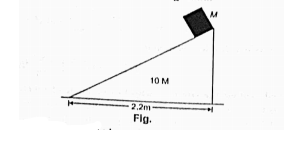 .Solution in Punjabi
.Solution in Punjabi
Step by step video & image solution for A block of mass M is places in the top of a biggr block of mass 10 M as shown in fig.All the surfaces are frictionless.The system is released from rest.Find the distance moved by the bigger block at the instant the smaller block reaches the ground.. by Physics experts to help you in doubts & scoring excellent marks in Class 11 exams.
Topper's Solved these Questions
- BOOK - JBD PUBLICATIONCHAPTER - MOTION OF SYSTEM OF PARTICLES AND RIGID BODYEXERCISE - EXAMPLE100videos
MOTION OF SYSTEM OF PARTICLES AND RIGID BODY
- BOOK - JBD PUBLICATIONCHAPTER - MODEL TEST PAPER-06EXERCISE - EXERCISE37videos
MODEL TEST PAPER-06
- BOOK - JBD PUBLICATIONCHAPTER - Oscillations and WavesEXERCISE - EXAMPLE97videos
Oscillations and Waves
Similar Questions
A body is rotating, it is necessary being acted upon by an exteral torque?
View SolutionGive an example of a physical quantity which has neither unit nor dimensions.
02:25View SolutionIs S.H.M. always linear?
05:50View SolutionA block of mass m is kept over another block of mass M nd the system rests on a horizontal force F acting on the lower block produces an accelertion F/(2(m+M)) in the system the two blocks always move together. A. Find the coefficient of kinetic frictioin between the bigger block and th horizontal surface. b. find the frictional force acting on the smaller block. c. Find the work done by the force of friction on the smaller block by the bigger block during a displacement d of the system.
04:01View SolutionFigure shows a small block of mass m which is started with a speed v on the horizontal part of the bigger block of mas m placed on a horizontal floor. The curved part of the surface shown is semicircular. All the surfaces are frictionless. Find the speed of the bigger block when the smaller block reaches the point A of the surface.
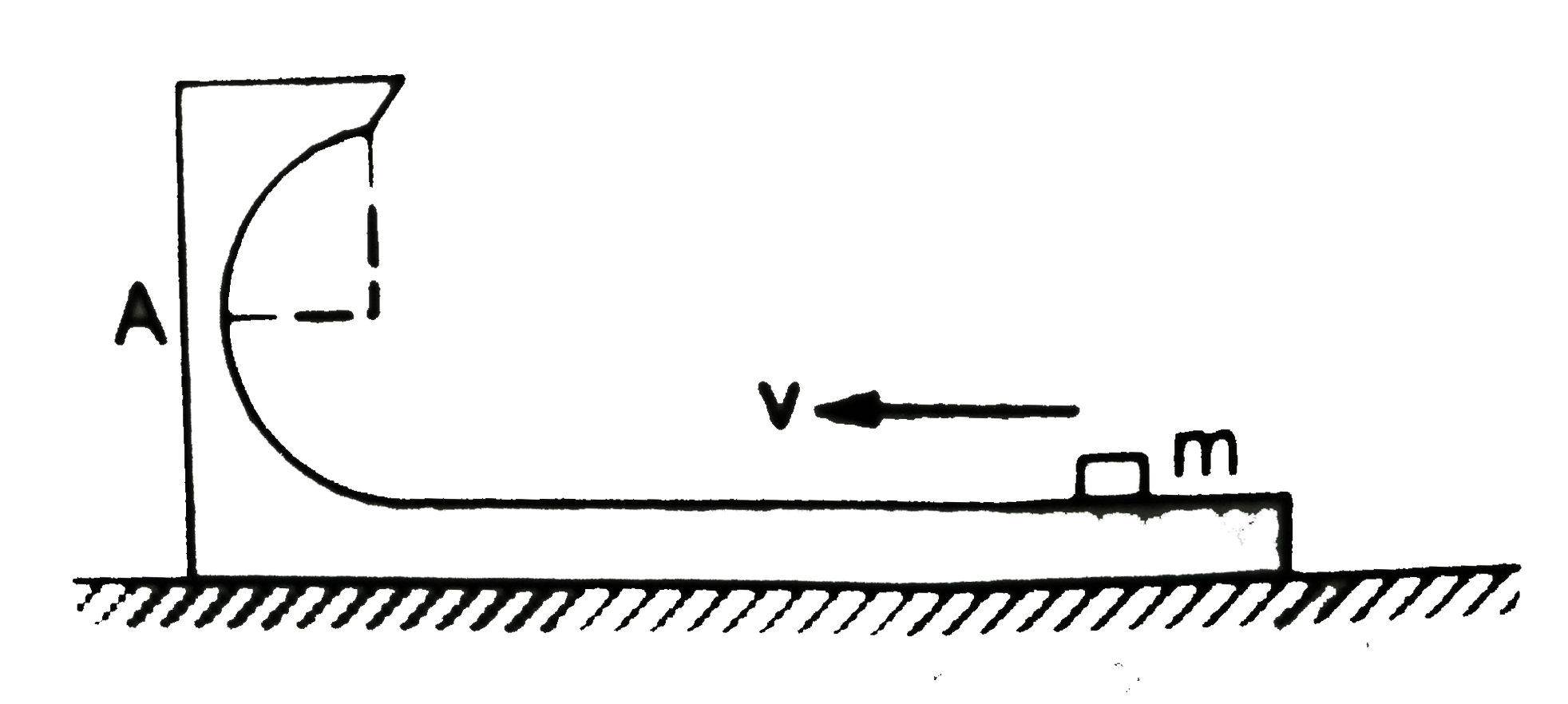 07:16View Solution
07:16View SolutionBlock A has a mass of 5kg and is placed on top of a smooth triangular block, B having a mass of 30kg. If the system is released from rest, determine the distance, B moves when A reaches the bottom. Neglect the size of block A.
 02:29View Solution
02:29View SolutionFigure shows a block A of mass 6 m having a smooth semicircular groove of radius a placed on a smooth horizontal surface. A block B of mass m is released from a position in groove where its radius is horizontal. Find the speed of the bigger block when the smaller block reaches its bottom most position.
02:59View SolutionA block of mass m is placed on a triangular block of mass M(M = 2m) , as shown. All surfaces are smooth. Calculate the velocity of triangular block when the smaller block reaches at bottom.
02:58View SolutionA block A (mass 4M) is placed on the top of a wedge block B of base length l (mass=20M) as shown in figure. When the system is released from rest. Find the distance moved by the block B till the block A reaches ground Assume all surfaces are frictionless.
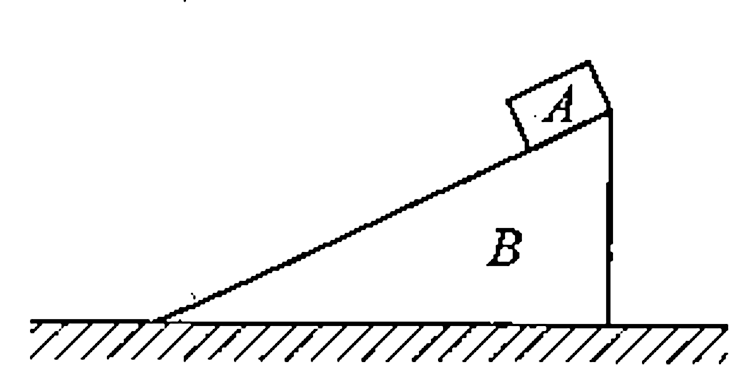 View Solution
View SolutionA block of mass m is kept over another block of mass M nd the system rests on a horizontal force F acting on the lower block produces an accelertion F2(m+M) in the system the two blocks always move together. A. Find the coefficient of kinetic frictioin between the bigger block and th horizontal surface. b. find the frictional force acting on the smaller block. c. Find the work done by the force of friction on the smaller block by the bigger block during a displacement d of the system.
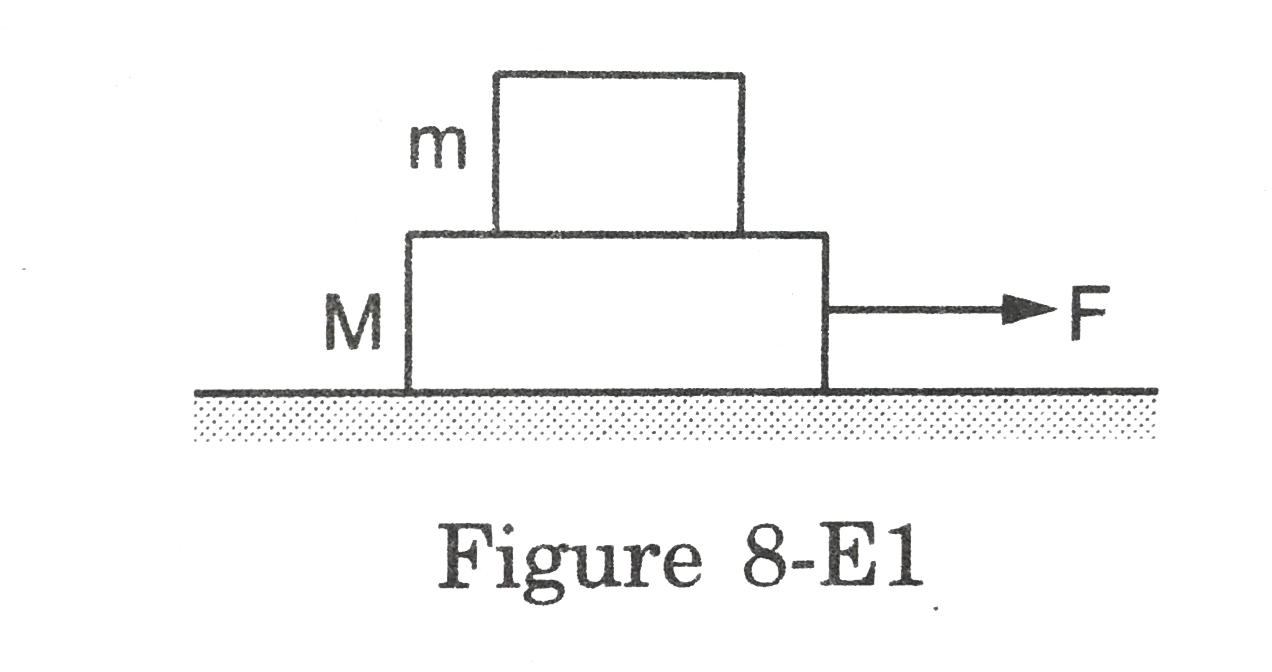 04:12View Solution
04:12View SolutionFigure shows a small block of mass m which is started with a speed v on the horizontal part of the bigger block of mas m placed on a horizontal floor. The curved part of the surface shown is semicircular. All the surfaces are frictionless. Find the speed of the bigger block when the smaller block reaches the point A of the surface.
 03:48View Solution
03:48View SolutionA block of mass 'M' is placed on the top of a wedge of mass '4M'. All the surfaces are frictionless. The system is released from rest. The distance moved by the wedge at the instant, the block reaches the bottom will be
 07:58View Solution
07:58View SolutionA block of mass M is placed on the top of a bigger block of mass 10M as shown in fig. All the surfaces are frictionless. The system is releated from rest. The distance moved by the bigger block by the time the smaller block reaches the ground is
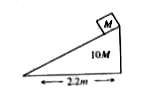 07:02View Solution
07:02View SolutionA block of mass m is placed on hthe top of bigger wedge M. All the surfaces are frictionless. The system is released from rest. Find the distance moved by smaller block (w.r.t triangular wedge) when bigger wedge travles distance X on plane surface
_PHY_219_Q01.png) 01:24View Solution
01:24View SolutionA block of mass m is placed on a triangular block of mass M(M=2m) , as shown. All surfaces are smooth. Calculate the velocity of triangular block when the smaller block reaches at bottom.
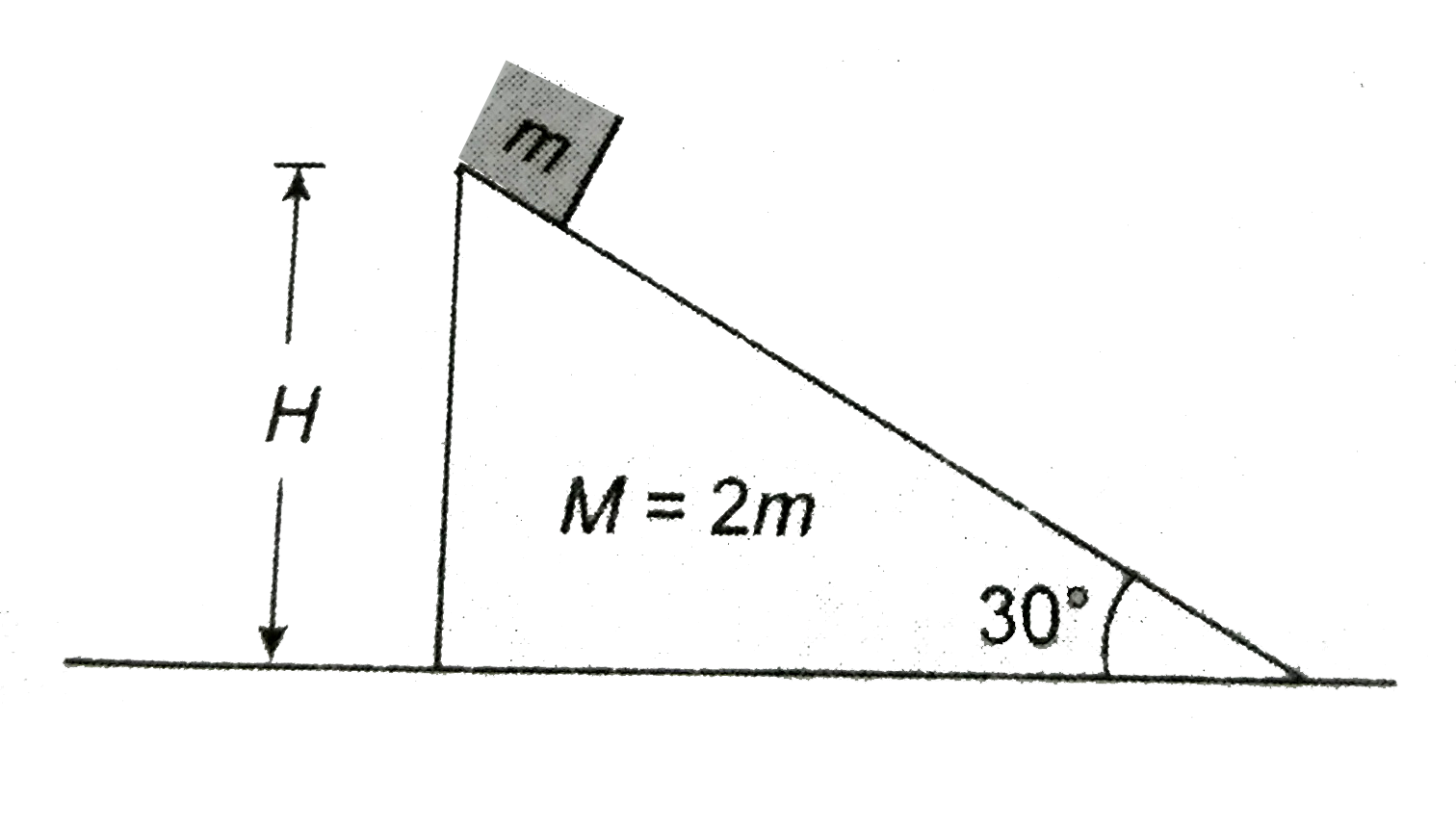 03:33View Solution
03:33View SolutionBlock A has a mass of 5kg and is placed on top of a smooth triangular block, B having a mass of 30kg . If the system is released from rest, determine the distance, B moves when A reaches the bottom. Neglect the size of block A.
06:50View Solution

